- Home
- Paul Christopher
Valley of the Templars ts-7 Page 2
Valley of the Templars ts-7 Read online
Page 2
“Any particular country?”
“Canada. My friend in the Dominican Republic.”
“You have pictures?”
“Yes.” Holliday and Eddie handed over sets of passport photographs they had taken earlier in the day.
“It will be expensive.”
“How expensive?”
“Five thousand euros. For each of you.”
“No problem.”
“Half now and your original passports.”
“Fine.” Holliday had already hit the bank machine and withdrawn money from one of the hundreds of accounts in Helder Rodrigues’s secret notebook. Having expected something like this, he took ten five-hundred-euro notes out of his wallet and put them in front of the man. He and Eddie put their real passports on the desk. Hartog swept them up. “Goed,” he said. “Come back in three days. Same time.”
They spent the three days sightseeing, going to most of the big museums like the Rijksmuseum, the State Museum, newly renovated, and of the course the world-famous Rembrandt Museum. They watched a diamond being cut and even took a boat ride through the city’s canals. At five past eight, three days after their first meeting, Holliday knocked on Hartog’s door. This time he was wearing a plain dark suit and a Richard Nixon mask. He met them at the door with the famous V for Victory sign the ex-president had given from the door of Marine One before making his long trip into purgatory, and then led them into the back office. There were fresh documents laid out on the desk. Holliday picked up his passport and Eddie picked up his.
“Very nice,” said Holliday.
“They are blanks from a friend I have at the consulate. If anyone ever matches the holograms, your names are on file. I even managed to get you Ontario Health Cards. Unfortunately, although the cards are real they are not in circulation, so if you are breaking your leg you are on your own, ja.” Hartog laughed behind the Nixon mask.
“That only accounts for three photographs; we gave you four. And where are our original passports?”
Hartog snapped his fingers. “I must have left them in the workroom downstairs.” He got to his feet, made the V sign again and disappeared through the rear door of the office.
Eddie frowned. “This has fish in it.” He leaned over the desk and twisted Hartog’s phone around. It had three buttons on it and one of them was lit.
“You’re right.” Holliday nodded, standing up. “It is fishy.” They pocketed their new documents and headed for the rear door of the office.
Behind the door was a small plain foyer lit by a single bulb and a set of heavy plank stairs leading downward. Holliday went first with Eddie right behind him.
The room was low ceilinged, dark, with a makeshift darkroom in one corner, a long table fitted with a laminating machine, a drafting table and a large color Xerox in one corner. Hartog was sitting at the long table talking in Dutch when Holliday and Eddie appeared. There was a fuming pipe in his mouth and a lighter on the table beside him. On seeing them he muttered something into the phone and hung up quickly. He put down the pipe.
“Talking to someone?” Holliday asked.
“My friend.”
“How long before your friend shows up?”
Hartog suddenly pulled out a desk drawer in the table and reached inside. Eddie took one step forward, grabbed the ten-foot-long oak table and overturned it, dumping Hartog off his stool. Holliday stepped over the table, bent down and picked up a compact little automatic pistol off the floor. A Walther PPK, the James Bond gun. He pointed it at Hartog. “The passports and the pictures.”
“In the drawer,” replied the Dutchman. Eddie checked the drawer and came up with the documents.
“Who were you talking to?” Holliday asked, pointing the gun roughly at the center of Hartog’s face, now devoid of its Richard Nixon mask.
“A lawyer.”
“What’s his name?”
“Derlagen.”
“Why?”
“He has contacts.”
“Who is he sending?”
“Some people.”
“How many?”
“Two, three, I don’t know.”
“They’re coming to kill us?”
“Yes.”
“Once upon a time it wouldn’t have occurred to me to do this,” said Holliday. “But people change.” He squeezed the trigger on the Walther and put a bullet into Hartog’s head just above the bridge of his nose.
He looked around the room, found a gallon tin of acetone for cleaning the press and spread it over everything, including Hartog. He dribbled a train of acetone to the bottom of the stairs and then used the lighter to start the fire.
“Come on,” said Holliday. “We better get out of here before the bad guys arrive.” He stood for a moment at the foot of the stairs, watching the fire gain strength; then he followed Eddie back to the main floor.
By the time they reached the store itself, Holliday realized they were too late. Someone was rattling at the door. There was a quick, brittle sound of glass breaking and then the door was unlatched. Holliday motioned Eddie to the left as the two men slipped in between the hanging racks of costumes.
Holliday could already smell the smoke from the fire downstairs, and it wouldn’t be long before the whole store was consumed. As the two men approached, he tensed, waiting for the right moment. He had the flat little Walther, but small caliber or not, it still made a lot of noise.
When it came, it came without thinking for both men. As his man passed him by, Eddie stepped out into the aisle, grabbed the man’s right wrist and bent it back toward his shoulder blades, forcing him to drop his weapon, a large-caliber automatic with a suppressor on it. That accomplished, the Cuban kicked the man’s legs out from under him, put a knee in his spine and wrapped an arm around his head, pulling sharply until he heard the bone at the base of the intruder’s skull snap.
Holliday’s man wasn’t much different. Holliday used the butt of the Walther to punch him in the throat, swept his legs out from under him and broke his neck. The smell of smoke was very strong now, and Holliday could see flames behind the glass in the office window. He flipped his man over and checked in his pockets.
“Shit.”
“Qué?” Eddie asked.
“They’re company men. CIA Philpott’s put a hit out on us.”
“A hit?” Eddie asked. “Como un golpe en la cabeza? No lo entiendo.”
“A kill order. We’ve got to get out of Amsterdam, fast.”
3
They took the six fifty a.m. KLM flight the following day and arrived in Toronto in the late afternoon. Holliday used his new passport and driver’s license to open up an account at the Royal Bank of Canada Airport branch; then he and Eddie took a town car into the city. They booked into the Park Hyatt at Avenue Road and Bloor Street, which was kitty-corner to the University of Toronto’s Centre for Medieval Studies, had a room service steak and then Eddie bailed out and was asleep on the couch within five minutes. Holliday gathered up his key card and went down to the business center.
Using the account codes he’d long ago learned from the notebook the monk Helder Rodrigues had given him, Holliday transferred one hundred and fifty thousand dollars in U.S funds from the Royal Bank of Canada’s main branch in Nassau in the Bahamas to his newly opened account in Toronto. He booked off the hotel computer, the online fees charged directly to the suite, then went back upstairs, had a quick shot of Scotch from the minibar, listening to Eddie snoring on the couch while he looked out at the lights of the city, then went to bed himself, giving in to the fatigue he’d endured in Ramstein’s hospital and his much more recent jet lag. He was asleep within a minute of his head hitting the pillows.
The next morning he and Eddie went to the hotel concierge, asked a number of questions and got satisfactory answers. Their first chore was a taxi ride to a store called Save More Surplus on the western edge of a public housing project ten or eleven blocks from the flying saucer shape of Toronto City Hall. Eddie bought a battered knapsack wi
th a faded Canadian flag sewed onto the flap, and Holliday bought two black Samsonite F’lite hard-shell suitcases. They then had the taxi do a U-turn and take them west along Queen Street until they reached a store called Henry’s Photo. While the taxi waited Holliday went into the big store, bought a Nikon D2X camera body and every lens and accessory that was available as well as a large block of cutout hard foam to protect it all.
They dropped their purchases off at the hotel, then took a second taxi to the local Walmart, where they bought a commercial-grade Weston Vacuum Sealer with an eighteen-inch seal, a box of one hundred large bags, two bottles of Krazy Glue and a black yoga mat.
They took the sealer and their other purchases back to the hotel, where Holliday dropped off Eddie and continued on to Royal Bank Plaza at the foot of Yonge Street, Toronto’s version of Broadway. The main branch of the bank was housed in a somewhat ostentatious skyscraper with gold-tinted faceted windows. Banks, never really liking the idea of people withdrawing money, balked slightly at Holliday requesting a hundred thousand dollars in American twenties, but eventually and after a few phone calls to the Bahamas they complied, giving him the money in a white cardboard box with a discreet lion rampant logo in one corner. Holliday immediately took the money back to the hotel, and the real labors began.
“You really think this is going to work, mi colonel?” Eddie asked, staring at their purchases spread out across the dining table in their suite.
“If what you tell me about customs at Jose Marti Airport is right, it should work like a charm,” Holliday said, smiling at his friend.
One hundred thousand dollars in American twenty-dollar bills weighs almost exactly eleven pounds. Each bill is approximately six inches by two inches, which means that a total of twenty-seven stacks of forty-seven twenties, or one hundred thousand dollars in total, can be vacuum-sealed in a single eighteen-by-eighteen-inch bag a little less than a quarter of an inch high. With the black lining of the Samsonite carefully removed, the bag could be glued to the back of the suitcase, covered with a carefully cut piece of black foam from the yoga mat and then the black nylon lining replaced. Which is exactly what they did.
At the conceirge’s suggestion they had an excellent dinner of osso buco at a restaurant simply called Grace and returned to the hotel. Back in their suite, Holliday trimmed the camera foam to the exact dimensions of the doctored suitcase, then cutouts for the camera body, the lenses and accessories. With that complete, Holliday went down to the business center and within half an hour he had cut and pasted off the Internet to make himself fifty “engraved” business cards, using the name on his passport and driver’s license:
UNESCO WORLD HERITAGE CENTER
JOHN LEESON
SENIOR STAFF PHOTOGRAPHER
He made another set identifying Eddie as his assistant and printed those out, as well. Considering the fact that Havana was a Unesco World Heritage city, it made sense that they would send a photographer assistant around every few years to document and project on the restoration of historic buildings in the city, and all the camera equipment in the suitcase would easily disguise the added eleven pounds of weight.
“That’s about it,” Holliday said. “Tomorrow we buy some clothes and a few guidebooks in the morning, have our meeting down the street in the afternoon and the next day we fly to Cuba.”
“And pray that everything goes as we have planned when we get there,” added Eddie.
Dr. Steven Braintree’s office at the University of Toronto’s Centre for Medieval Studies was located on the third floor of a large, stodgy-looking neo-Georgian building kitty-corner to the hotel on the southern side of Bloor Street. The office was pretty much the way Holliday had remembered: piles of papers on piles of file folders on piles of books with a few overflowing filing cabinets and more files, papers and books piled on his wide windowsill. Braintree hadn’t changed much, either; there were a few flecks of gray in his long dark hair now, but the trendy Prada glasses, the sneakers and the jeans were just the same. This time the message on his black T-shirt said FREE GIGI’S! PIZZA GIGI’S, BEST PIZZA IN TORONTO—PICKY POTHEADS PICK PIZZA GIGI’S.
Holliday made the introductions and they sat down in what little space was left. “Been a while, Colonel. I was a little surprised to hear from you,” said Braintree. Holliday had been following clues to the origins of the Templar sword he’d found hidden in his uncle Henry’s house, and Braintree had been on the list. “You ever find what you were looking for?” asked the history professor.
“Too much, when you get right down to it,” Holliday replied. It had never occurred to him that there would be a litter of bodies left behind him on his search or that the monk Helder Rodrigues would pass along the best-kept secret in seven hundred years before dying in his arms.
“So, what can I do for you now?” Braintree asked.
“Tell me everything you know about the Templars in Cuba.”
Braintree glanced at Eddie. “Te Cubana?”
“Sí, Doctore.” Eddie nodded.
“Miami?”
“Alamar,” responded the Cuban with a smile. Braintree laughed.
“Un cubano real, entonces,” said Braintree.
“Sí,” said Eddie.
According to Braintree, after the dissolution of the Templar order by Pope Clement in 1312, its remnants fled in all directions, some across the English Channel into England and Scotland, some—as Holliday well knew—to the Azores and some to Portugal and Spain. The ones who crossed the Pyrenees Mountains into the Catalonian Province of Spain enjoyed a brief life as the Christ Knights of Catalonia, but they were quickly rooted out by the Catholic king of Spain. Those who traveled by sea and landed in Portugal fared much better and came under the protection of King Diniz under the name the Order of Christ in 1319, which led directly to Emmanuel I and Christopher Columbus.
“That you’ll have to explain,” said Holliday.
Braintree did. Although virtually every school history text in North America identified Columbus as an Italian from Genoa, there was virtually no real evidence of this at all. It was far more likely that he was born in either Spain or, even likelier, Portugal.
By 1492, the year Columbus sailed west to what he thought was the Indies, both Columbus and Emmanuel I were members of the Ordem Militar de Cristo, or the Military Order of Christ, the present incarnation of the Knights Templar in Portugal at the time. Although Columbus soughts funds from Isabella of Spain for his voyage of discovery, he already had a secret pact with Emmanuel that any information about his voyage that he gave to Spain should also be given to Portugal. Columbus agreed and the Templar cross on the sails of his famous ships, the Nina, the Pinta and the Santa Maria, were a signal to Emmanuel that their secret bond would be kept.
Columbus spent very little time on the island of Cuba before moving on to Hispaniola, or what is now known as Haiti, and the Dominican Republic. One of the crew members on the first voyage, a man in his midtwenties and of prominent birth, Diego Velázquez, caught Columbus’s eye and soon after they settled in Hispaniola, Columbus ritually made Velázquez an officer in the Ordem Militar de Cristo, an honor the young Spaniard took very seriously. Nineteen years later in 1511, Velázquez, now known as Don Diego Velázquez de Cuéllar, was ordered by Diego Columbus, Christopher Columbus’s firstborn child and now viceroy of the West Indies, to occupy and conquer the island of Cuba. For the next five years Don Diego Velázquez established a number of settlements, including, most notably, Santiago de Cuba and San Cristóbal de Havana, a small town just west of present-day Havana. For these efforts Don Diego Velázquez was made governor of Cuba by Diego Columbus. To commemorate the discovery of Havana, Don Diego built La Templete, a small neoclassical temple, which would soon become the headquarters for Don Diego’s version of the Ordem Militar de Cristo, which he named the Brotherhood of the Knights of Christ, La Hermandad dos Cavaleiros de Cristo. Very soon after this, at least between its members it became known simply as La Hermandad or the Brotherhood.
&
nbsp; “Does it still exist?” Holliday asked.
Braintree shrugged. “There’ve been all sorts of rumors over the years, just like the never-ending rumors of the original Templar, but soon after conquering Cuba, Velázquez fell out of favor with Diego Columbus during Cortez’s conquest of Mexixo, and stripped of authority, he died in Santiago de Cuba in 1524. Most probably the Brotherhood died with him.”
“Or maybe not,” said Eddie quietly.
4
The Air Canada A320 came in low over the sea, reaching land in the early afternoon. The gently rolling countryside below could just as easily have been rural France—fields, farms and small villages crouched in broad valleys or perched on low hills, all connected by country roads that led to broader highways.
“Mi patria precioso,” whispered Eddie with a choke in his voice as he stared down at the landscape from the window seat of the narrow-body jet.
“Let’s just hope we get out of the airport,” said Holliday.
“We will, mi colonel, but remember, after that you must listen very carefully to what I tell you about how things work in this place.”
“I promise to obey every command.” Holliday smiled. Eddie raised an expressive eyebrow. An instant later the slightly ominous whir and thump of the flaps lowering filled the interior of the aircraft and they began their final approach to Jose Marti International Airport.
Terminal 3 at Jose Marti was built specifically for international arrivals and departures, showcasing Cuba as a modern twenty-first-century country, which everybody, especially the Cubans, knows it is not. The architecture was slick: glass, steel and open-beam high ceilings with crisscrossing assemblies of pipe and I-beams, some of them hung with large versions of the world’s flags, including the Stars and Stripes. The Cuban government might hate American foreign policy and politicians, but they love American tourists. Although there have been no sanctioned flights to Cuba since 1960, the Cubans found ways around the problem almost immediately. Americans could reach Cuba by first going to Canada, Mexico or the Bahamas and flying onward from those countries. Instead of passport entry and exit stamps, Cuban customs provided the tourist with a small separate visa slipped into the passport on arrival and removed on departure. Although each tourist who visited Cuba from the United States could technically be arrested under the Trading with the Enemy Act, it didn’t stop more than one hundred and fifty thousand tourists a year from going there, although most of the guidebooks suggest that they shouldn’t announce their American citizenship too loudly and might even go so far as to wear a Canada pin, or a Canadian flag patch, on their knapsacks. On the other hand, there is a regular St. Patrick’s Day on O’Reilly Street in Havana, complete with a pipe band, green beer and a choir singing “Danny Boy” in a Spanish accent. After all, it was rumored that even Che Guevara had Irish-American roots, and of course, even Castro himself had an American connection—in the late 1940s Fidel had been offered a five-thousand-dollar signing bonus by the New York Giants.

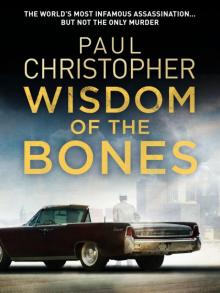 Wisdom of the Bones
Wisdom of the Bones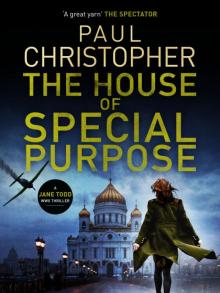 The House of Special Purpose
The House of Special Purpose The Second Assassin
The Second Assassin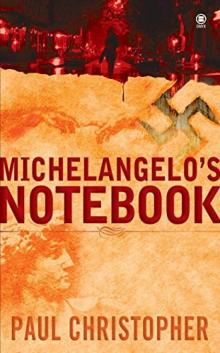 Michelangelo's Notebook
Michelangelo's Notebook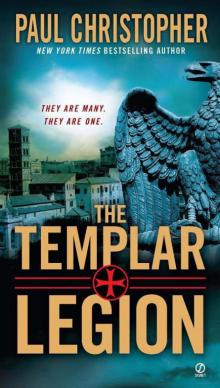 Templar Legion
Templar Legion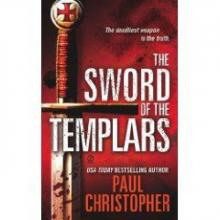 The Sword of the Templars t-1
The Sword of the Templars t-1 Red Templar
Red Templar The Aztec Heresy
The Aztec Heresy The Templar Legion
The Templar Legion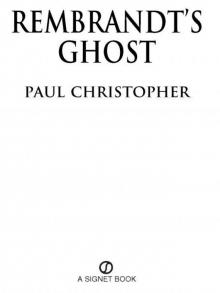 Rembrandt's Ghost
Rembrandt's Ghost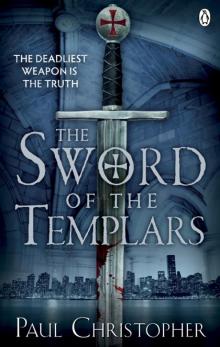 Sword of the Templars
Sword of the Templars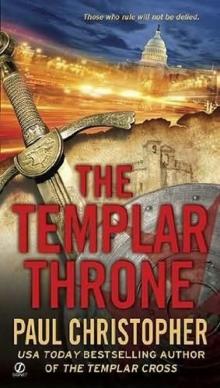 The Templar throne t-3
The Templar throne t-3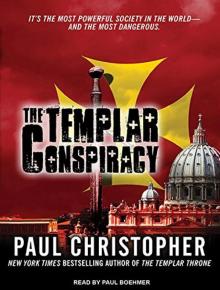 The Templar Conspiracy
The Templar Conspiracy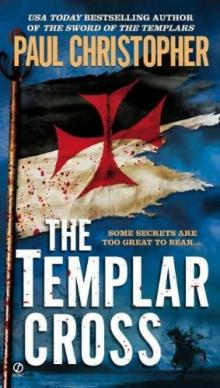 The Templar Cross t-2
The Templar Cross t-2 The Templar Legion t-5
The Templar Legion t-5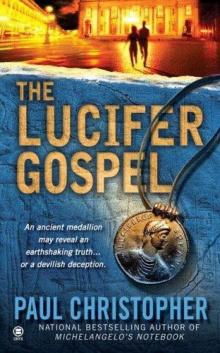 The Lucifer Gospel
The Lucifer Gospel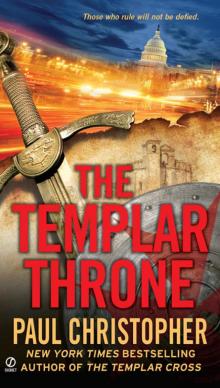 Templar Throne
Templar Throne Michelangelo_s Notebook fr-1
Michelangelo_s Notebook fr-1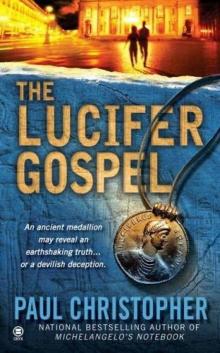 The Lucifer Gospel fr-2
The Lucifer Gospel fr-2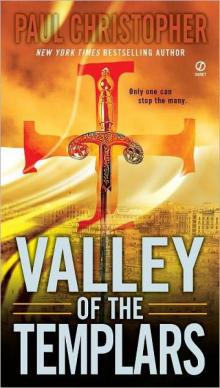 Valley of the Templars ts-7
Valley of the Templars ts-7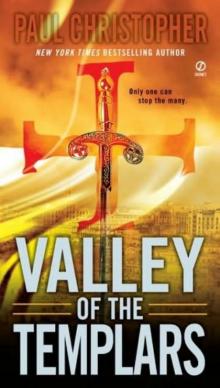 Valley of the Templars
Valley of the Templars Templar Cross
Templar Cross The Templar Throne
The Templar Throne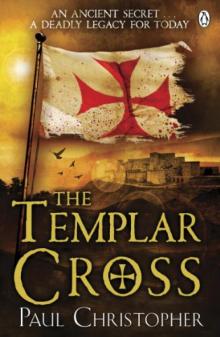 The Templar Cross
The Templar Cross Lost City of the Templars
Lost City of the Templars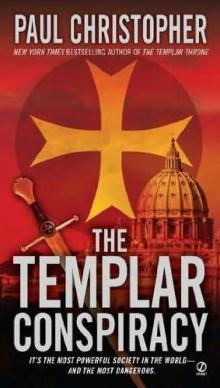 The Templar conspiracy t-4
The Templar conspiracy t-4 Templar Conspiracy
Templar Conspiracy